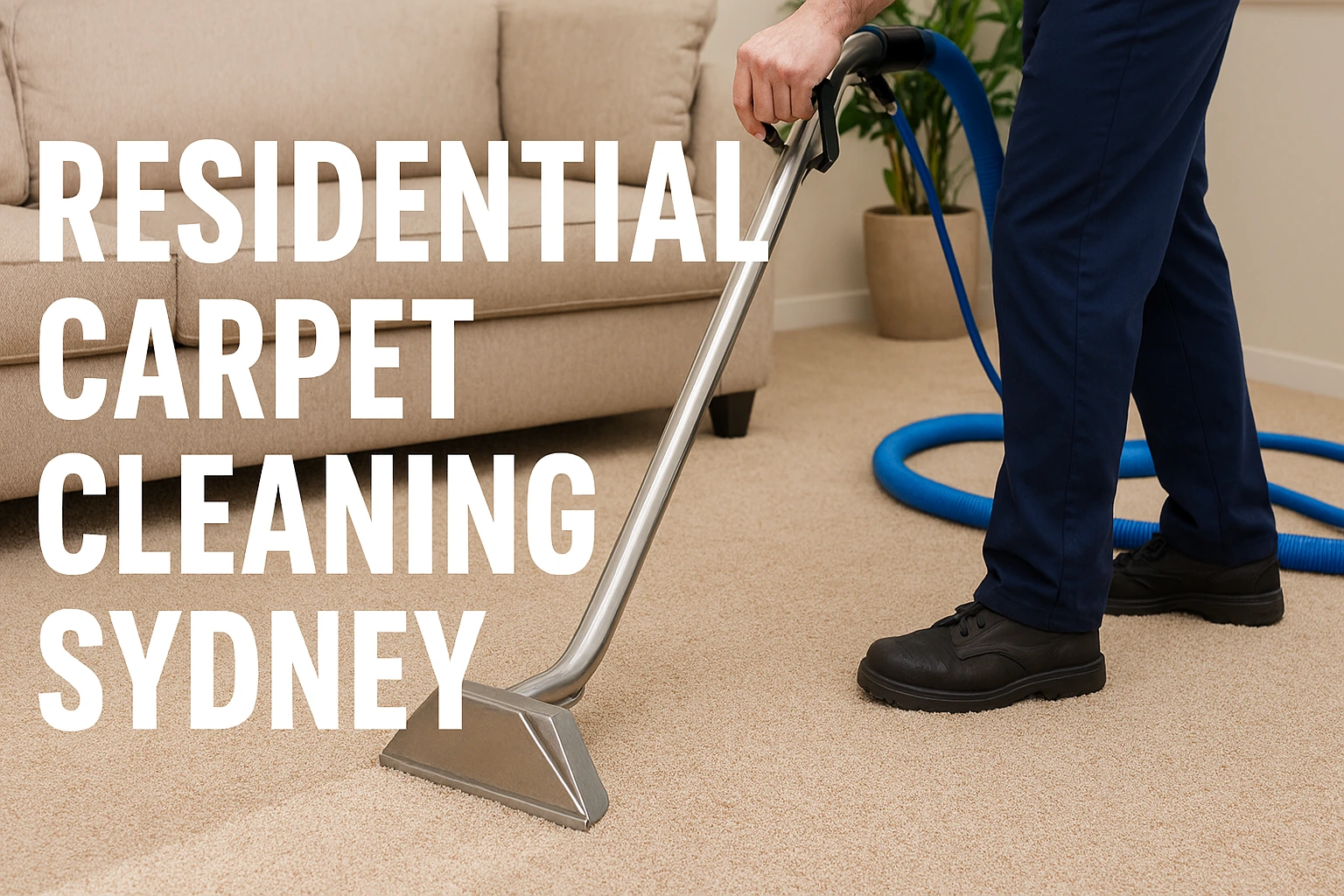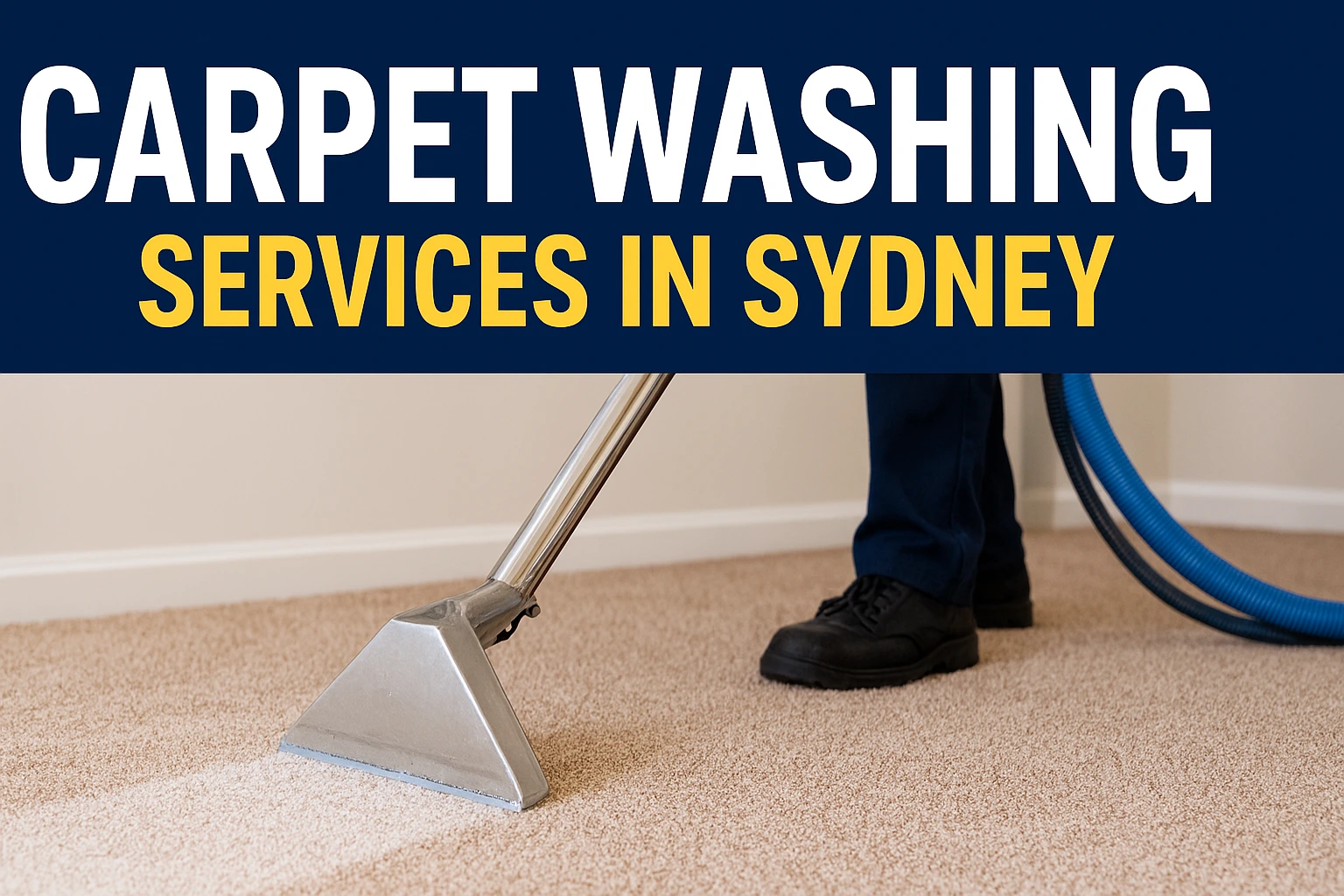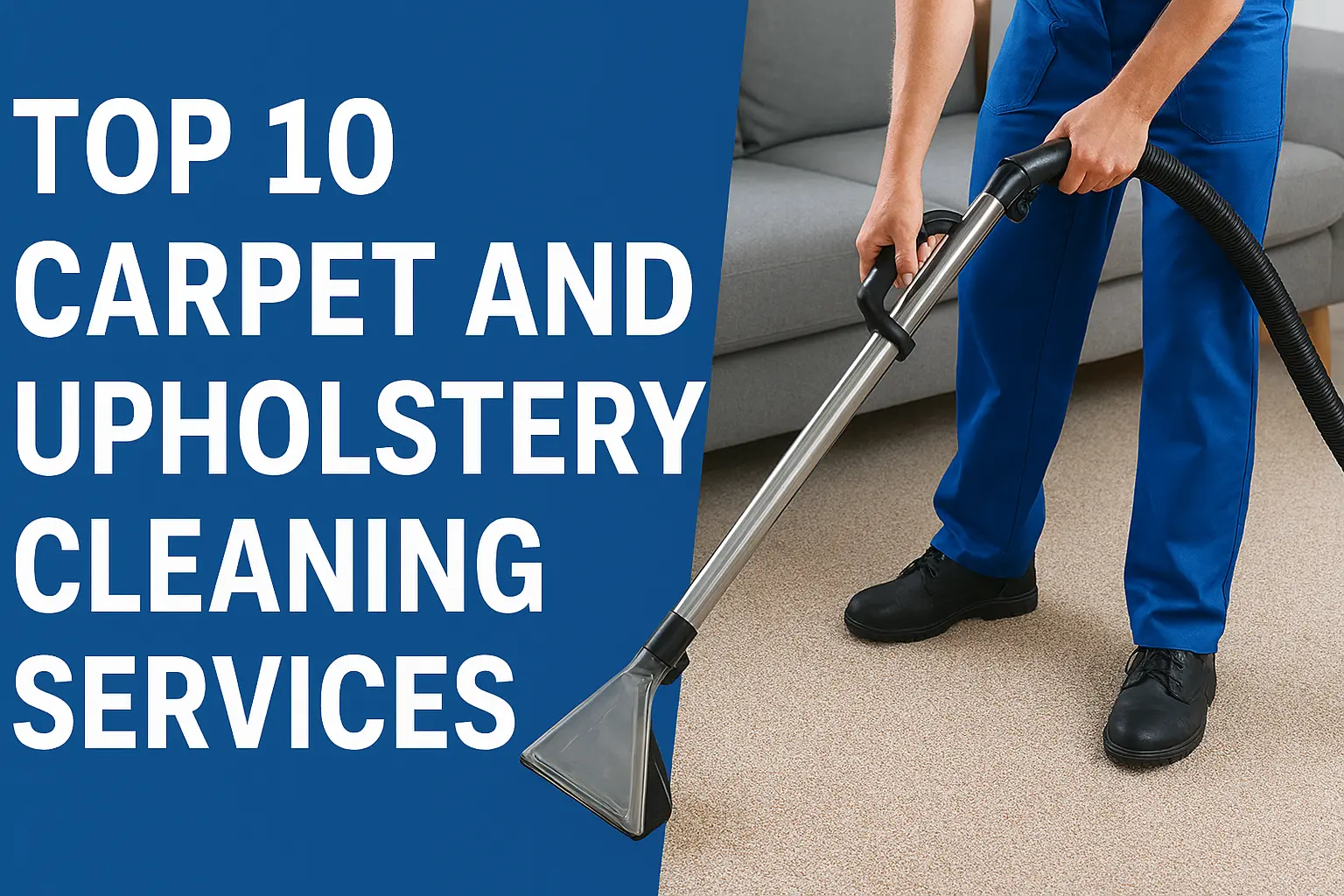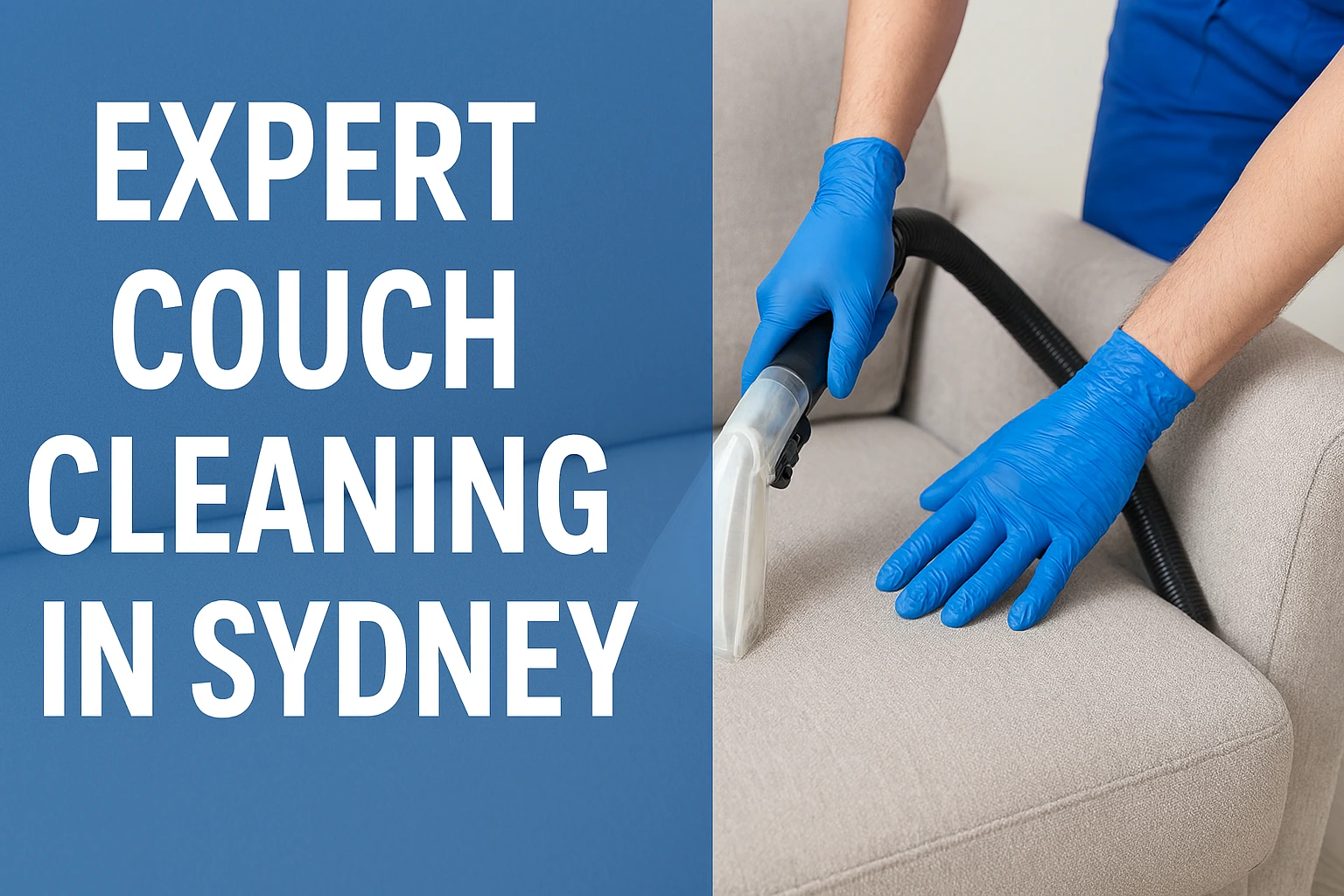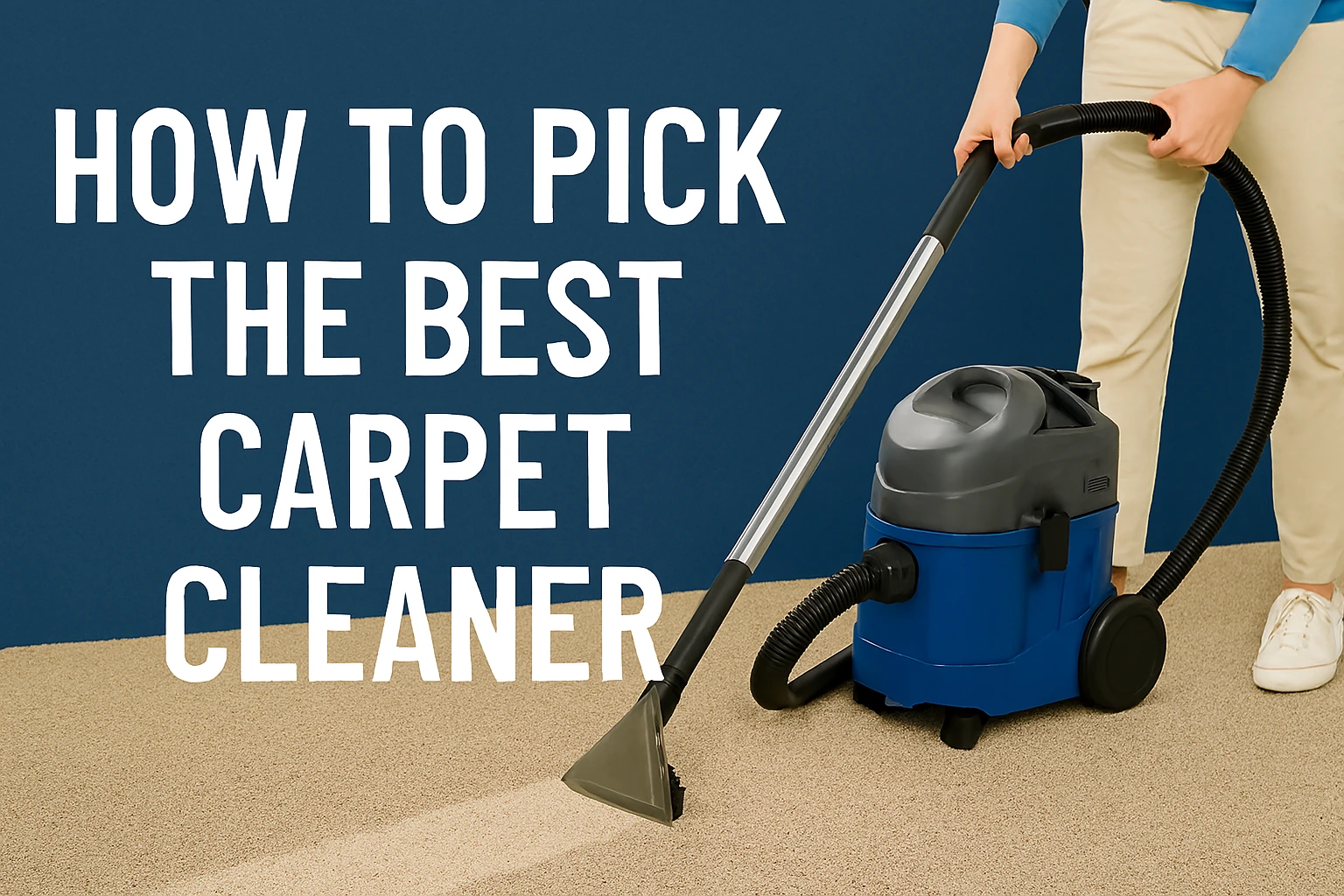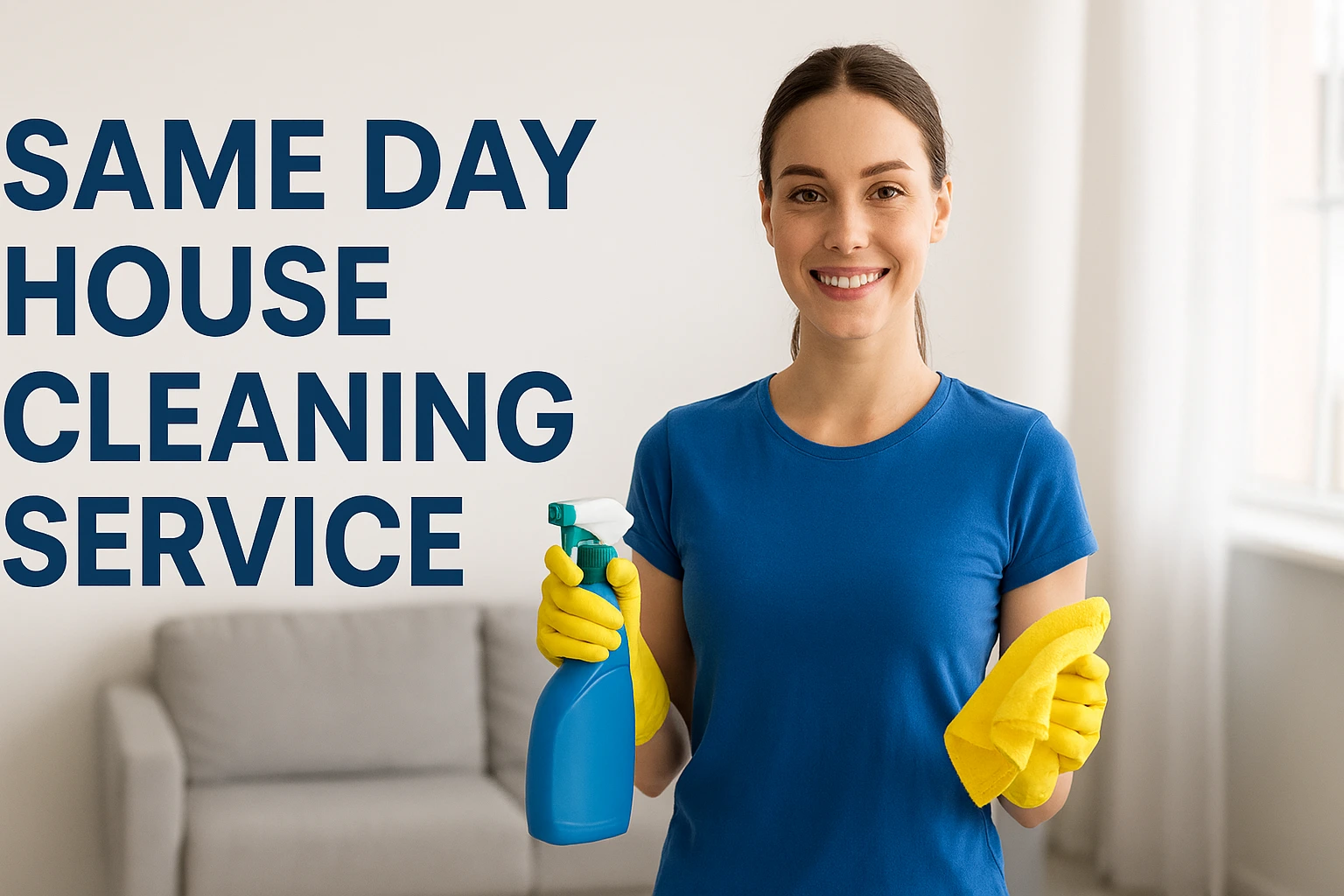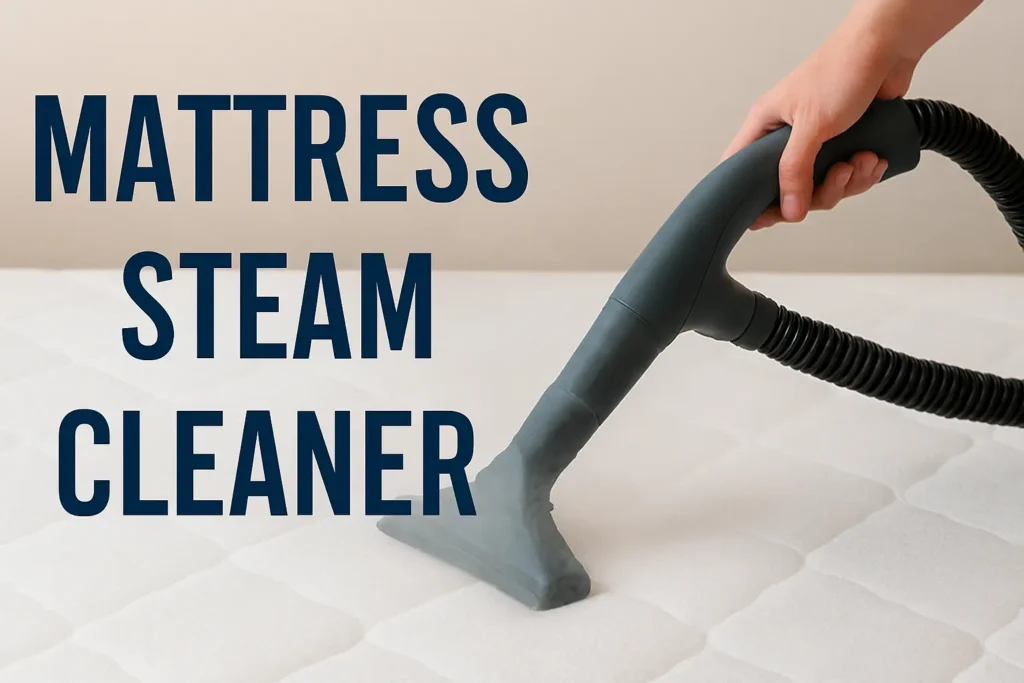
Waking up on a mattress that feels uncomfortable or looks stained can leave you feeling tired and frustrated. That’s why it’s important to know when your mattress needs a deep clean or when it’s time for a replacement. Since we spend so much time in bed, taking care of your mattress is a smart investment. In this post, you’ll find out when to use a steam cleaner, when to think about getting a new mattress, and some easy ways to help your mattress last longer so you can sleep well and stay healthy.
Why mattress care matters and where steam cleaning fits
Taking care of your mattress helps it stay comfortable, clean, and supportive for years. Over time, substances like dirt, sweat, and spills can accumulate, leading to unpleasant odors and potential allergies. By cleaning the surface regularly, using protection, and performing deep cleaning when necessary, you can maintain your mattress in good condition.
A mattress steam cleaner gives your mattress a deep clean by removing dirt, getting rid of allergens, and making the fabric feel fresh, all without using strong chemicals. Steam can reach deep into the fabric to kill germs, which is helpful if you have pets, allergies, or minor stains. But steam cleaning won’t fix issues like sagging, worn-out springs, or foam that has lost its shape.
Signs you should consider mattress steam cleaning
- Recent surface stains and spills have not been properly treated.
- Noticeable odors from sweat, pets, or smoke.
- Allergy symptoms that worsen in bed, such as sneezing, itchy eyes, or congestion.
- Visible dust or pet hair is embedded in fabric despite vacuuming.
- Light soiling on a mattress protector or cover that transfers to the mattress even after washing the protector.
If you notice these problems, using a professional or rental steam cleaner can help improve the appearance of your mattress, eliminate odors, and remove allergens. This helps your bed feel fresh again.
When replacement is the better option
Cleaning can’t restore support. Replace your mattress if you notice:
- Sagging or visible indentations greater than 2.5 to 5 centimeters or that cause back pain.
- Persistent pain or poor sleep quality can be attributed to the mattress, despite cleaning and rotation.
- Broken springs or loud squeaks indicate frame or spring failure.
- Significant foam compression where memory foam or support foam no longer rebounds.
- Extensive staining from bodily fluids or mildew that has penetrated layers and caused odors or mold.
If your mattress is more than 7 to 10 years old and has these problems, it’s usually better for your health and your wallet to replace it rather than cleaning it repeatedly. An old or sagging mattress can disrupt your sleep cycle, preventing the restorative deep sleep and REM phases that are crucial for memory consolidation and overall health. By ensuring that your mattress supports healthy sleep cycles, you can maintain better sleep quality and improve your well-being.
How to decide between a mattress steam cleaner or replacement
Assess support first
Lie on the mattress and test for sagging, pressure points, and alignment. If support is compromised, cleaning will not resolve the issue.
Check age and warranty.
Mattresses at or past their lifespan are more likely to need replacement. If your product is under warranty due to a defect, contact the manufacturer before paying for major cleaning or repair.
Evaluate stains and odor.
If the issues are just on the surface, a mattress steam cleaner can help make it feel fresh again. However, if smells persist after cleaning, the problem may be more severe. Think about your health needs when deciding what to do.
For allergy sufferers, steam cleaning and protective covers may help restore a usable environment. For individuals with severe asthma or those who are immunocompromised, replacement may be safer if contamination is extensive.
Budget and environmental priorities
Cleaning your mattress is often cheaper and more eco-friendly than buying a new one, which uses more materials and energy. Think about how much a new mattress costs compared to how long it will last. For example, if you clean your mattress three times a year for eight years, you might spend only half as much as you would on a replacement. Looking at these numbers can help you decide which option saves you more money in the long run.
Step-by-step mattress cleaning and maintenance routine
Daily and weekly habits
- Air out the mattress weekly by folding back bedding to let moisture evaporate.
- Use a breathable mattress protector to block liquids and reduce soiling.
- Rotate the mattress every 3 months for non-flip models to even wear.
Monthly maintenance
- Vacuum the mattress surface using a clean upholstery attachment to remove dust and skin flakes.
- Spot-treat stains with gentle, mattress-safe cleaners: blot liquids, avoid saturating the mattress, and use a small amount of enzyme cleaner for organic stains.
Annual or biannual deep care
- Schedule professional mattress steam cleaner treatment or use a quality steam-cleaning unit to lift embedded dirt, remove odors, and reduce allergens. Steam at controlled temperatures, ideally between 120 °C and 150°C, to avoid over-wetting and protect internal materials.
- After steam cleaning, ensure the mattress dries completely before making the bed to prevent mold growth.
How a mattress steam cleaner works and what to expect
A mattress steam cleaner combines hot steam and suction. The steam loosens dirt and oils, and the suction pulls out the dirt and moisture. Professional machines can reach temperatures hot enough to kill germs and dust mites, and they don’t leave behind any harmful chemicals.
What to expect from a professional service:
- Pre-inspection and spot-testing for fabric compatibility.
- Targeted stain pre-treatment when needed.
- Steam cleaning combined with suction extraction.
- Use fast-drying methods, such as fans or dehumidifiers, to shorten the drying time.
- Post-clean assessment and advice on continued care.
Be careful not to get the mattress too wet, since trapped moisture can cause problems. Ensure your cleaning service has a thorough plan for drying the mattress quickly.
Mattress steam cleaner risks and limitations
- Steam cleaning only works on the surface and cannot restore the bounce in foam or repair broken springs.
- Excessive moisture or inadequate drying can lead to the growth of mold.
- Some mattresses with glued foam layers or certain upholstery finishes may be damaged by high heat or moisture.
- Using too much steam or cleaning too frequently can wear out the delicate parts of your mattress more quickly.
Select a cleaning service that understands the manufacturing process of mattresses and utilizes the appropriate tools for cleaning beds and upholstery.
Protecting your mattress between steam cleans
- Invest in a quality mattress protector that is breathable, waterproof, and fully encases the mattress.
- Use fitted sheets made from natural fibers to help regulate moisture and reduce friction.
- Avoid eating in bed to reduce spills and crumbs that attract pests.
- Keep pets off the bed when possible or use a washable cover layer for animals.
Try to keep the humidity in your bedroom between 40 and 60 percent. This helps prevent excessive moisture from accumulating, which can damage your mattress.
Simple DIY refresh between professional cleans
- Sprinkle baking soda across the mattress surface, let sit 2–6 hours, then vacuum thoroughly to neutralize odors.
- Spot-clean fresh stains by blotting immediately with a clean cloth; avoid rubbing.
- Use a handheld fabric steamer on low settings for surface refreshes, but avoid saturating seams and edges.
Handheld steamers are useful for quick cleanups, but if you need a deep clean or want to sanitize your mattress, it’s best to hire a professional service.
Choosing a professional mattress steam cleaner service
Experience with mattresses, not just carpet cleaning.
Clear drying protocols, such as using industrial fans or scheduling low humidity.
Inspection and spot testing before treatment.
Transparent pricing and guarantees for results or satisfaction.
Positive reviews and local references.
When replacement improves sleep and health
Getting a new mattress is the right choice if your old one no longer supports you or is severely worn out. A new mattress can help your spine stay aligned, ease pressure points, and help you sleep better. When you replace your mattress, keep these tips in mind:
- Choose a mattress that matches your sleep position and body type.
- Factor in return policies and trial periods to test comfort at home.
- Pair a new mattress with a high-quality protector to maximise lifespan.
For authoritative guidance on mattress lifespan and care basics, refer to Sleep Foundation’s mattress care advice for evidence-backed recommendations
Quick checklist: mattress steam cleaner or replacement
- Support test: If sagging or back pain persists, replace.
- Age: Individuals older than 7–10 years likely require replacement.
- Stains and odor: If surface-bound, try a mattress steam cleaner.
- Allergies: Steam plus covers can help; severe contamination may require replacement.
- Cost: Cleaning is cheaper; consider replacement when recurrent cleaning costs near replacement price.
- Drying capability: If you can’t ensure rapid drying after cleaning, replacement is safer to avoid mold.
Final verdict and recommended plan
If your mattress is still supportive but just needs a deep clean or has some odors or allergens, a steam cleaner can help. But if your mattress no longer supports you, still smells after cleaning, has deep dents, or is simply old, it’s probably time to get a new one. You can clean a good mattress to help it last, and replace it when it no longer meets your needs for comfort or health.
Remember, you can either clean and take care of your mattress or replace it when needed. Making the right choice for your mattress will help you sleep better and keep your bedroom healthier.
Here are some easy steps you can take today: vacuum your mattress, invest in a full-coverage protector, and consider booking a professional steam cleaning if you notice stains, unpleasant odors, or experience allergy symptoms. These simple actions help your mattress last longer, keep you healthy, and make sure you sleep comfortably every night.
